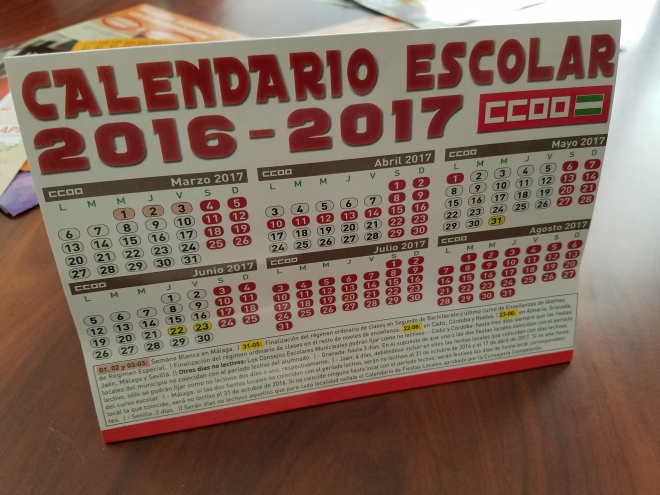“The point of power is always in the present moment.”
-Louise Hay
I briefly mentioned in my last post how mindfulness and meditation have helped me in my job as an English Language Assistant in Spain. I want to elaborate on that a little bit.
Prior to coming to Spain in the fall of 2015, I had almost no experience in a classroom setting. I worked with children (ages 5-11) at a summer camp before I left, but that didn’t make me feel the slightest bit qualified to help teach English, especially not to the 100+ Spanish teenagers and adults I would soon be meeting. My lack of experience, however, wasn’t the main source of my anxieties. What really scared me was having to speak in front of a classroom.
The fear of public speaking is something most people are familiar with. It was never my biggest fear, but my previous experiences with it weren’t overly positive. I can recall countless class presentations in high school and college where I could hardly speak unless I had all my lines written on a note card. As soon as I stepped in front of the class my heart would start pounding, my palms would sweat profusely, and I would imagine every one of my classmates judging the shit out of me. While I was fortunate enough to never completely bomb a presentation, I was sure as hell relieved when they were over.
Fortunately, as I grew older and a little more confident, my social anxiety started to decrease. This meant that a classroom full of spectators no longer had the sweat-inducing power that it once did. Still, even with my increased confidence, those first few weeks in a Spanish classroom were quite difficult.
Speaking in front of my classes brought with it a ton of different thoughts and emotions, the majority of which were negative. From the moment the teacher introduced me, my mind began to tell me negative stories about what the students thought of me. Every look of confusion meant that I was totally unqualified to be standing in in front of them. Every little snicker from a 17-year-old indicated that no one would take me seriously. Every time a student looked bored (in a mandatory English class, I should add) my mind told me that my words were falling on deaf ears. It was negative story after negative story.
As you can imagine, those thoughts only made speaking and giving presentations all the more nerve-wracking. Instead of paying attention to what I was saying, I was focusing on how each student was reacting to my words. I wasn’t worried about giving the most value, though. I was more concerned with not being judged by them. So I stuttered and stumbled over words. I lost track of my thoughts and where I was in my lesson. And most of all, I got really freaking stressed out. I left each class with tense knots in my neck and shoulders, my mind occupied with all the mistakes I had surely made.
You could say that working as a teaching assistant was becoming a rather grim experience. This is where mindfulness came in.
About a month into my stay in Spain, I started to get back into mindfulness and meditation. I hadn’t meditated in almost two months, and it was showing in both my personal and professional life. Fortunately, I had enough awareness to see that I was letting the stream of thoughts in my head control me and that I didn’t have to keep doing that.
So I slowly began applying what I knew about mindfulness to my job. It was nothing fancy. I simply started paying attention to the different thoughts I was having during class. Noticing how negative they were, I then tried not engaging with them when they came up. So when I would see a student with a bored expression on his/her face, my mind would still say, “Oh crap! What I’m talking about must really suck.” But instead of latching onto that thought, I would just let it be and bring my focus back to the present moment.
This wasn’t an instant fix. At first, I could only stay present for a couple minutes before getting lost in my thoughts again. But as the months passed, I started to notice some positive changes. My classes were flowing more smoothly. I could give presentations without stumbling over my words or losing my place. Those pesky thoughts popped up less and less, and even when they did it was easier to bring myself back into the present. By the end of the year, I felt like I had done a complete 180.
I’m now two months into my second year of assisting. I work at a different school and with a different group of students. While it took me a couple of weeks to adjust, I continue to see the benefits of mindfulness in each class. My nerves are pretty much gone, and every day I feel a little bit more relaxed in the classroom.
I’m far from perfect. My thoughts still get the best of me at times. But as I continue to make meditation a core habit in my life, I know I’m on my way to becoming not just an engaging speaker, but someone who can really make a difference in the lives of my students as well.
